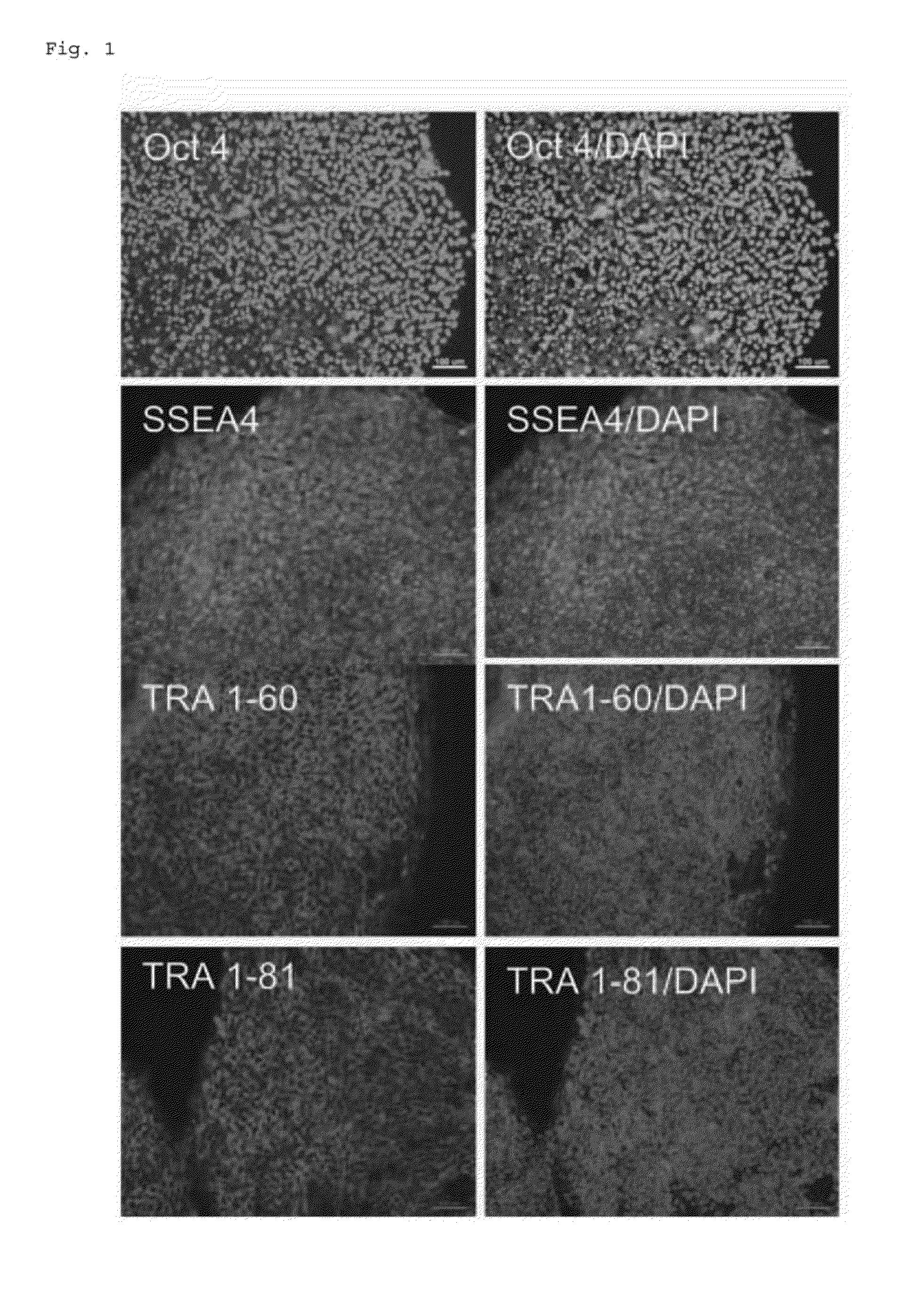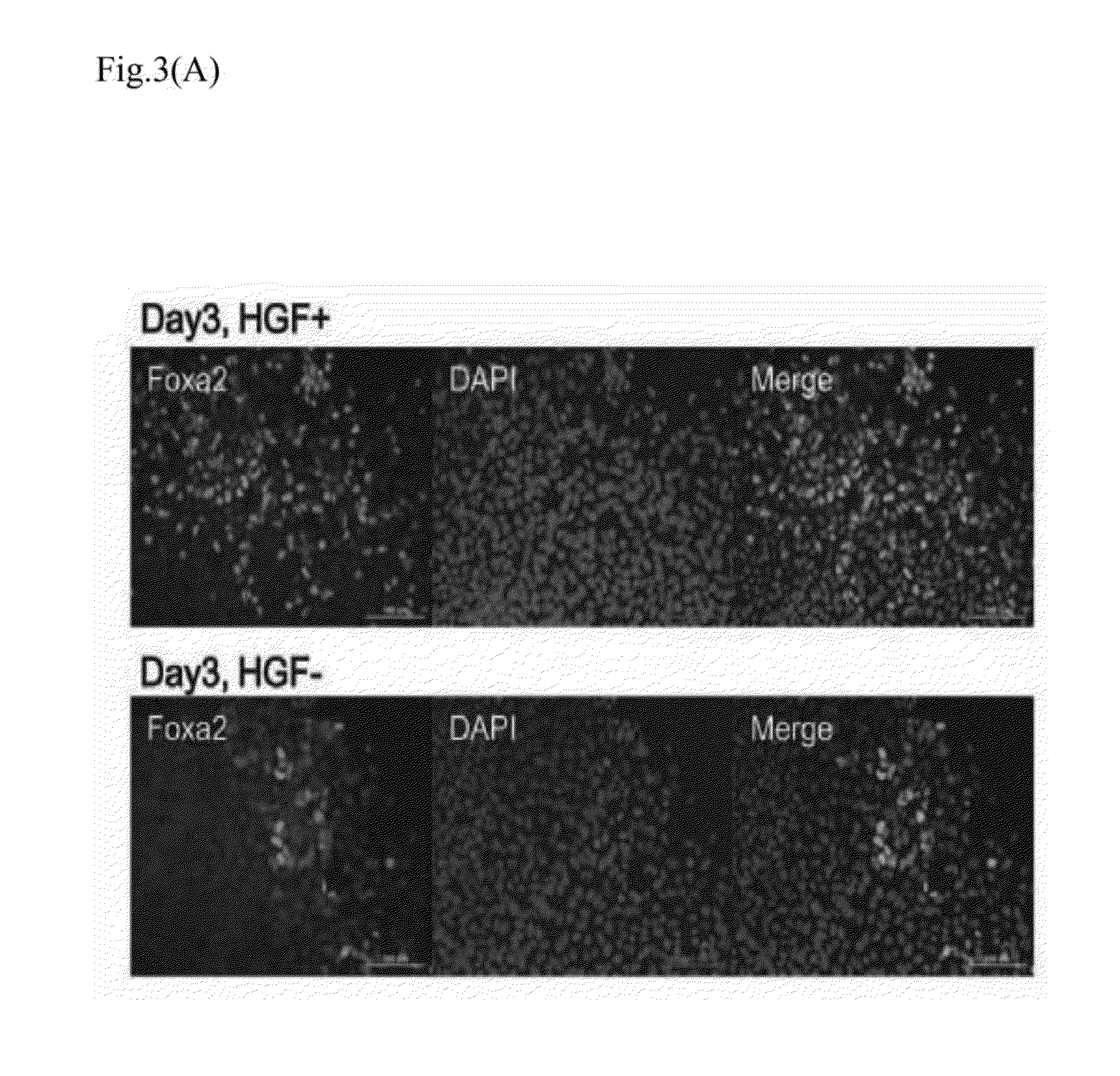Mature hepatocyte cells derived from induced pluripotent stem cells, a generating method thereof, and use thereof for treatment of liver diseases
a technology stem cells, which is applied in the field of mature hepatocyte cells derived from can solve the problems of hgf-associated molecular mechanisms during embryonic development, liver injury and cirrhosis, and still poorly understood, and achieves rapid induce the differentiation of induced pluripotent stem cells and significantly improves the definitive endoderm formation
- Summary
- Abstract
- Description
- Claims
- Application Information
AI Technical Summary
Benefits of technology
Problems solved by technology
Method used
Image
Examples
embodiments
Embodiment 1
In Vitro Differentiation of Human iPSCs into Mature Hepatocyte Cells
[0031]Materials and Methods
[0033]Human ES cell line H9 (National Institutes of Health Code: GE09) and human iPSC line CFB46 were maintained on mitomycin-C (Sigma-Aldrich, St Louis, Mo.) inactivated mouse embryonic fibroblast (MEF) feeder layer in ES cell medium (Dulbecco's modified Eagle medium [DMEM] / F12 supplemented with 20% knockout serum replacement, 10 ng / mL basic fibroblast growth factor, 1 mM L-glutamine, 100 μM nonessential amino acids, 100 μM 2-mercaptoethanol, 50 U / mL penicillin, and 50 mg / mL streptomycin [Invitrogen, Carlsbad, Calif.]). Before differentiation, the cells were cultured on Matrigel-coated tissue culture dishes using MEF-conditioned medium.
[0034]In Vitro Differentiation of Human iPSCs into Hepatocyte Cells.
[0035]The in vitro differentiation protocol was similar to our previously reported study and that of Hay et al. In brief, when human iPSCs had attain...
embodiment 2
iPSC-Derived Hepatocyte Cells can be Used to Rescue Lethal Fulminant Hepatic Failure
[0069]Materials and Methods
[0070]Animal Model.
[0071]To assess the therapeutic potential of iPSC-derived hepatocytes, a model of lethal fulminant hepatic failure caused by CCl4 in NOD-SCID mice was used. A dose of 0.35 mL / kg body weight was optimal and resulted in lethality in all animals in 2 weeks after administration of CCl4.
[0072]Five- to eight-week-old NOD-SCID mice were purchased from National Laboratory Animal Center (Taipei, Taiwan). All the experimental procedures involving the use of animals were approved by the Animal Care Committee of the Taipei Veterans General Hospital. The lethality of CCl4 on NODSCID mice was tested by gavage. iPSC-derived hepatocyte cell transplants were performed at 24 hours after administration of CCl4 by intrasplenic injection, as previously reported (Kuo T K, et al. Gastroenterology 134: 2111-2121, 2008).
[0073]Results
[0074]Transplantation of 4.0×107 iPSCs per kilo...
PUM
| Property | Measurement | Unit |
|---|---|---|
| pH | aaaaa | aaaaa |
| time | aaaaa | aaaaa |
| color | aaaaa | aaaaa |
Abstract
Description
Claims
Application Information
 Login to View More
Login to View More - R&D
- Intellectual Property
- Life Sciences
- Materials
- Tech Scout
- Unparalleled Data Quality
- Higher Quality Content
- 60% Fewer Hallucinations
Browse by: Latest US Patents, China's latest patents, Technical Efficacy Thesaurus, Application Domain, Technology Topic, Popular Technical Reports.
© 2025 PatSnap. All rights reserved.Legal|Privacy policy|Modern Slavery Act Transparency Statement|Sitemap|About US| Contact US: help@patsnap.com



